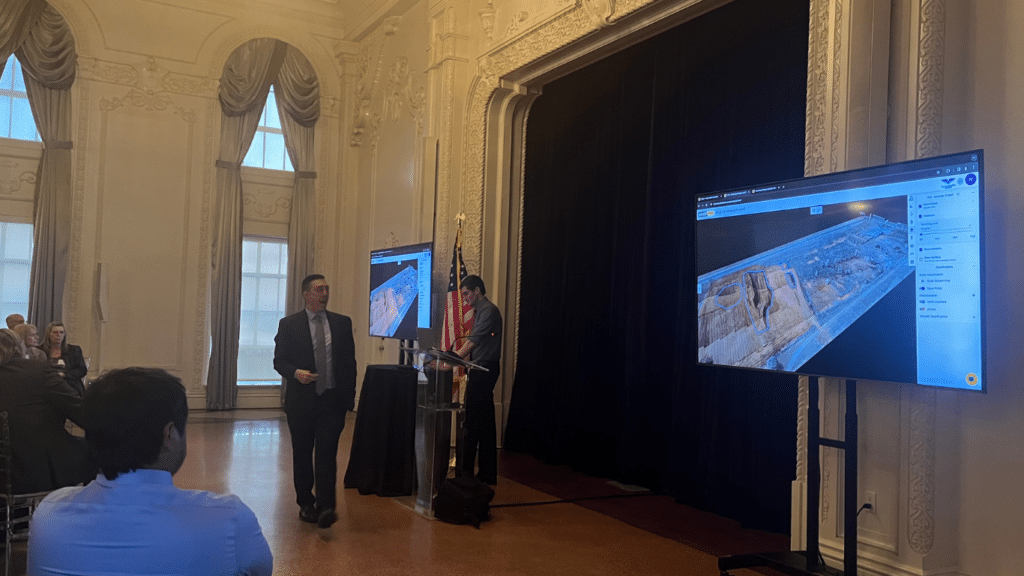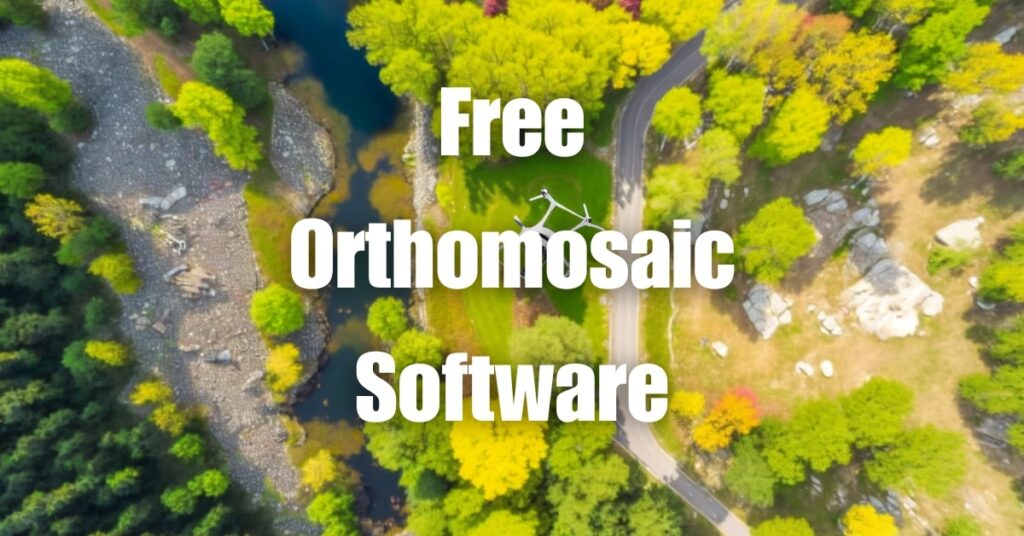LiDAR technology has been making waves in various industries, from autonomous vehicles to topographic mapping, and even in the realm of drone technology. The power and potential of LiDAR have been praised for its ability to create high-resolution digital models of the environment, but one question often lingers – can LiDAR see underground? This article will delve into the truth of this fascinating inquiry, revealing the possibilities and limitations of LiDAR technology when it comes to unearthing what lies beneath our feet.
Understanding LiDAR
What is LiDAR?
LiDAR, which stands for Light Detection and Ranging, is a remote sensing technology that measures distance. It does this by illuminating a target with laser light and then analyzing the reflected light. The technology is akin to RADAR, but instead of using radio waves, it uses light from a laser. This method of data collection yields high-resolution maps of physical features, making it an invaluable tool for a variety of applications.
The technology first emerged in the 1960s and has been continuously improved since then. In its early years, it was primarily used for atmospheric studies and oceanography. But today, LiDAR has a wide array of applications in many fields, including geology, forestry, conservation, and urban planning. With the advent of drone technology, LiDAR is now more accessible and versatile than ever, enabling detailed study and mapping of both terrestrial and atmospheric features.
How Does LiDAR Work?
LiDAR operates on a simple principle: a laser beam is fired at a target, and the time it takes for the beam to return to the LiDAR instrument is measured. The speed of light is constant, so by calculating the time difference, we can determine the distance between the LiDAR device and the target.
The LiDAR instrument typically sends out rapid pulses of laser light at a specific target and measures the time it takes for each pulse to bounce back. The device can emit hundreds of thousands of pulses every second, resulting in a continuous stream of accurate distance measurements.
For instance, if a LiDAR system is mounted on an aircraft or drone, it can map the landscape below by firing laser pulses at the ground. The time it takes for each pulse to travel to the ground and back allows us to calculate the altitude of the aircraft above that point on the ground. When combined with GPS data, this information allows for the creation of detailed and accurate 3D topographic maps.
Delving Deep: Can LiDAR Penetrate the Ground?
Uncovering the Truth: Can LiDAR Detect Underground Structures?
LiDAR is indeed a powerful tool for mapping surface features, but what about underground structures? To answer this question, we first need to understand the properties of light and its interaction with different substances.
Light, as it interacts with substances like water, glass, and indeed, the ground, can be absorbed, reflected, or refracted (bent). The degree to which these phenomena occur depends on the properties of the substance. With soil, the vast majority of light is either absorbed or reflected at the surface. Only a tiny fraction will penetrate the ground, and of this, even less will return to the surface and be detected by the LiDAR instrument.
So, while LiDAR can, in theory, detect underground structures, in practice, its ability to do so is severely limited. Under the right conditions, and with very powerful LiDAR systems, it might be possible to detect large, shallow sub-surface structures. However, for most practical applications, the answer to the question, “Can LiDAR see underground?” is no.
Probing Depths: How Deep Can LiDAR Penetrate the Ground?
Given the limitations stated above, how deep LiDAR can penetrate the ground is not a straightforward question. The depth of penetration is contingent on a variety of factors, including the power of the LiDAR system, the wavelength of the laser light used, and the properties of the ground (soil type, moisture content, etc.).
However, as a general rule, we can say that conventional LiDAR systems are unlikely to penetrate more than a few centimeters into typical soil. In very clear water, LiDAR may penetrate to several meters, but the ground is much more opaque, and hence less penetrable by light.
LiDAR Underground Mapping Techniques
Despite the limitations, there are a few methods where LiDAR technology could potentially be used for underground mapping. One of these is called bathymetric LiDAR. This technology uses a green laser (which penetrates water better than the infrared lasers used in typical LiDAR systems) to map underwater topography in clear, shallow water bodies.
Another method, not involving LiDAR but often mentioned in the same context, is the use of ground-penetrating radar (GPR). Unlike LiDAR, which uses light, GPR uses radar pulses to image the subsurface. This method can be used to detect and map underground features in certain circumstances, and to greater depths than LiDAR. However, GPR also has its limitations and is not a panacea for all underground imaging needs.
LiDAR and Its Limitations
Examining the Challenges of Underground Imaging with LiDAR
While LiDAR is an incredibly effective tool for creating detailed topographic maps and collecting data on surface objects, when it comes to underground imaging, it faces significant challenges. The primary one is that laser light, which LiDAR relies on, does not penetrate well through solid matter.
The physical properties of soil and rock naturally limit the depth of light penetration. Additionally, the types of soil and rock, their moisture content, and the presence of other materials like metals or minerals can also affect how deeply LiDAR can “see”.
Another challenge is the difficulty of interpreting the data. Even if some of the light manages to penetrate the ground and bounce back, deciphering what caused the reflection can be very complex. Was it a particular type of soil, an underground structure, or perhaps a water source? The analysis requires considerable expertise and is often subject to interpretation.
Exploring the Limitations of LiDAR for Underground Imaging
Despite its prowess in mapping and remote sensing, LiDAR is not the optimal tool for subsurface imaging. This limitation is primarily due to the fact that light is not the best medium for penetrating the ground. Sound waves, as used in seismic surveys, or electromagnetic waves, as used in ground-penetrating radar, are much more effective for this purpose.
That said, LiDAR has been successful in detecting shallow subsurface features in certain cases. These cases usually involve very specific conditions, such as certain types of soil or vegetation cover, or the presence of artificial structures like buried pipes or cables. However, such successes are the exception rather than the rule.
Beyond LiDAR: Other Technologies for Subsurface Mapping
Best Practices for Underground LiDAR Surveys
While LiDAR has its limitations in underground imaging, certain practices can help maximize its potential. One of them is using the technology in conjunction with other methods. For instance, combining LiDAR with ground-penetrating radar (GPR) can provide a more complete picture of the subsurface.
Another best practice is to conduct multiple surveys over time. This can help to detect changes in the landscape and potentially reveal subsurface features that would otherwise remain hidden. Additionally, incorporating geological and environmental data can aid in interpreting LiDAR data and revealing the underground story it tells.
LiDAR vs. Ground-Penetrating Radar for Subsurface Mapping
When it comes to subsurface mapping, LiDAR often finds itself compared to ground-penetrating radar (GPR). While LiDAR uses pulses of light to measure distances and generate detailed images of surfaces, GPR uses radio waves that can penetrate into the ground, bounce off various structures or layers, and return to the surface.
GPR tends to be more effective for subsurface mapping, as radio waves can penetrate further into the ground than light waves. Moreover, GPR can provide information about the size, shape, and depth of underground objects or layers, while LiDAR can only provide surface data.
However, GPR also has its limitations. Its effectiveness decreases as the depth increases, and it can struggle in certain types of soil, especially those that are highly conductive like clay.
Can LiDAR be Used for Geological Surveys?
LiDAR can play a valuable role in geological surveys, particularly in mapping surface topography and structures. Its ability to create detailed 3D models of the landscape makes it a great tool for identifying geological features like faults, folds, and erosion patterns. However, when it comes to exploring what lies beneath the surface, other technologies like seismic imaging and GPR are generally more effective.
LiDAR Applications and Accuracy
What are the Applications of LiDAR Technology?
LiDAR has emerged as a powerful tool with a broad spectrum of applications across many industries. Here are some notable uses of this versatile technology:
Forestry and Agriculture
In these sectors, LiDAR is used to analyze terrain, assess crop health, monitor growth, and optimize irrigation. It can provide accurate tree counts and measurements, which are essential in managing forests and improving yields in agriculture.
Infrastructure Development
Engineers and architects utilize LiDAR to create detailed 3D models of landscapes and built environments. These models are critical for planning infrastructure projects like roads, bridges, buildings, and power lines.
Autonomous Vehicles
Self-driving cars use LiDAR to navigate and detect obstacles. The technology helps create a real-time, 3D map of the environment, enabling the vehicle to understand its surroundings.
Environmental Research
Researchers use LiDAR to study changes in the environment, such as erosion, deforestation, and glacier movement. It helps in predicting natural disasters like floods and landslides, thus aiding in disaster management.
Archaeology
Archaeologists have found LiDAR to be a powerful tool for uncovering hidden archaeological sites, including ancient cities and roads obscured by vegetation or soil.
The Accuracy of LiDAR in Creating 3D Maps of the Environment
When it comes to the accuracy of LiDAR in creating 3D maps, it’s considered one of the most precise remote sensing technologies available. The technology provides a high degree of accuracy, with modern LiDAR systems capable of achieving vertical accuracy down to 15 cm and horizontal accuracy within 1 meter.
However, the actual accuracy can vary depending on several factors such as the type of LiDAR system used (airborne or terrestrial), the altitude of the aircraft (for airborne LiDAR), the density of the point cloud (the number of laser pulses fired per second), the characteristics of the target area (e.g., its reflectivity, roughness, and color), and the quality of the GPS and IMU (Inertial Measurement Unit) data.
Despite these factors, LiDAR’s exceptional precision has led to its widespread adoption in various fields. Its ability to capture intricate details, even in challenging environments, has made it a trusted tool for those requiring highly accurate 3D mapping.
As we’ve explored throughout this in-depth analysis, LiDAR technology presents an array of capabilities, including some potential for underground imaging. However, its practical applications for sub-surface exploration are bounded by its inherent limitations.
Still curious about how LiDAR and other technologies are revolutionizing the drone industry? Then you definitely should visit our detailed guide on Building and Growing Your Drone Business. Here, you’ll learn more about how technologies like LiDAR are shaping the future of aerial imaging and mapping.
Need professional drone services or advice on implementing LiDAR technology? Contact Blue Falcon Aerial. Our expert team is always ready to provide guidance and support in your aerial endeavors, helping you soar to new heights in the drone industry.




